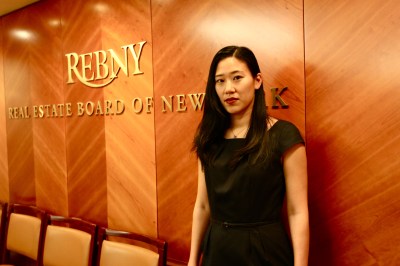What Does Seth Pinsky's Wife Know About Real Estate? A Lot, It Turns Out.
By Jotham Sederstrom January 17, 2012 1:00 pm
reprintsPerhaps the best way to describe Angela Pinsky’s advocacy for the real estate industry is by saying that when she joined the Real Estate Board of New York almost two years ago, she didn’t see her job as much different from the one she was leaving in the mayor’s office.
“I work on a lot of the same issues,” said Ms. Pinsky, who married Economic Development Corporation head Seth Pinsky last summer. “The thing about the real estate industry, it’s very civic minded. Many owners are family businesses and there’s this strong tradition in the industry of wanting projects and policies that are best not just for the industry’s own interests, but for the entire city.

Landlords know that their success and the health of their investments depend on the health of the city as a whole.”
Ms. Pinsky joined the mayor’s office during the heady first years of the Bloomberg administration, a period of sweeping vision, and bore witness firsthand to how real estate could provide government with the levers for urban change.
Starting as then-Deputy Mayor Dan Doctoroff’s chief of staff, one of the first projects she worked on was the rezoning of the Williamsburg and Greenpoint neighborhoods in Brooklyn, a process that would eventually allow a wave of residential development to sprout in the area. The neighborhood’s potential wasn’t as easy to see then. Ms. Pinsky lived in Williamsburg at the time, near the waterfront, an area that was a forlorn stretch of derelict-looking industrial buildings.
“If you didn’t get dinner by 6:00 you weren’t going to eat that night,” Ms. Pinsky said. “It’s hard to believe looking at the neighborhood today, but there weren’t grocery stores or restaurants back then.”
The area was already gaining momentum as a place for artists and hipsters and for its proximity to Manhattan. The rezoning, though, kicked that transformation into high gear and made the neighborhood the magnet for living, culture and nightlife that it is today. The project was just one of many seeds of revitalization that the administration sought to plant around the city, a bold agenda that galvanized Mrs. Pinsky’s view of real estate as a tonic that could cure the city’s ills.
“I worked on the Olympic bid and PlaNYC,” Ms. Pinsky said. “There was the feeling that you were never doing enough.”


